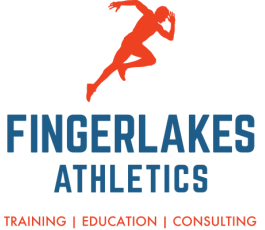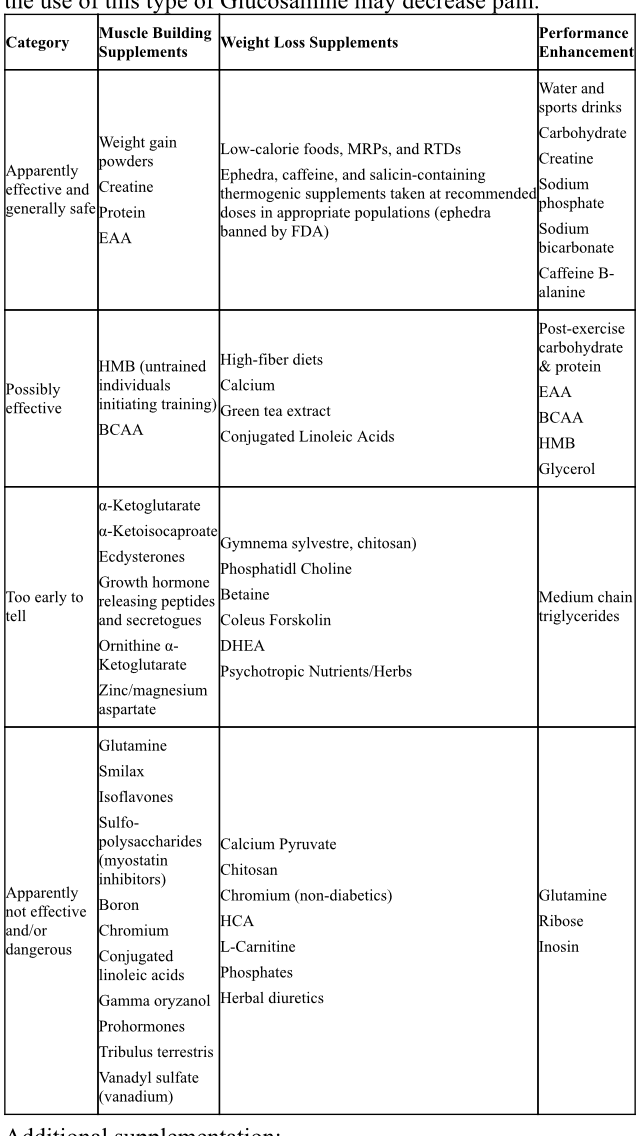|
I recently completed the second talk in a 3 part series for Cornell Fitness Centers discussing program considerations based on goals. Each component could easily be its own article, so I am going to focus on the general considerations and leave the specifics for another time. This is one of my favorite topics, so I really enjoyed the talk! When putting a program together for an individual or team it is important to consider their goals for training, their personal history and comfort with exercise and explaining the commitment it takes to achieve success.
In order to be successful in a fitness program it is vital to not only do the exercises at the appropriate intensity, but to also make an effort for the recovery. True progress is not solely made in the gym, but by adopting a lifestyle that will lead to recovery, adaptation and long term success. Your body will adapt to the stress that you place upon it and the goal of exercise and training is to get it to adapt based on your goals. You will apply a load greater than where you are now then recover from that training and then apply a load greater than where you are now. This is the sequence that is used to achieve success. It may seem very simplistic, and it is. It really is a matter of applying a sequential load in an organized manner that creates adaptation. What load we choose to apply, and in what manner, is what will dictate the adaptation to our program. For every goal, we will manipulate the program in an effort to create the adaptation that we want. In addition to the programming, it is essential to get enough rest to recover from the training. It is also important to have the proper nutrition that will provide both the fuel necessary for training and the nutrients necessary for recovery. Without having the basics covered, the program cannot deliver ideal results. Muscular Strength: In order to build strength heavier weights must be lifted. Setting up a 4-6 week training block for each repetition range can help build a foundation that allows for strength development. Strength can be improved by lifting 2-3 times per week with multi joint compound exercises doing 3 sets of 8 repetitions or fewer. This heavier load recruits more muscle fibers leading to strength gains. Exercises include squats, deadlifts, lunges, chest presses, rows, shoulder presses and pull downs. Muscular Power: Power is the ability to produce force quickly and is achieved by combining strength and speed. In addition to getting stronger following the programming outline above, you also need to be faster. The two ways to gain power are to lift using maximal loads of 1-3 repetitions or to use light weight for maximum speed up to 6 repetitions. This combination of training will improve strength and speed leading to more power. This is very beneficial for athletic settings where the ability to produce force quickly is necessary. Muscular Endurance: Muscular endurance is not the same as cardio respiratory endurance. Muscular endurance is the ability to contract the muscle repeatedly to delay failure due to fatigue. Lighter weights with more repetitions help achieve this goal. Continue to use the same compound exercises to build more global muscular endurance or choose single joint isolation exercises to improve certain motions. This is also very beneficial for injury rehabilitation and recovery. Muscular hypertrophy (size): We used to think that gaining muscle meant performing 8-12 repetitions per exercise, but now know that size can be achieved by alternating heavier lifting days with lighter lifting days. The key is to work at maximal intensity. The intensity of the exercise performed for the repetitions is what leads to success. In addition to large movements, smaller isolation exercises can be used to increase size. Workouts can be total body in nature, or broken up to alternate the muscles worked. Weight loss: What leads to sustained weight loss is a lifestyle change. A recent study that evaluated long term weight loss success versus failure identified that those who maintained the weight loss ate fewer calories per day, fewer calories from fat and moved more. In addition to exercise, their movement was generally more throughout the day. They would walk more, take the stairs and generally be more active. This greater activity during the day coupled with a healthy diet is what allowed them to maintain their weight loss goals. Conditioning: Conditioning is very event driven. If your training is based on a team sport then performing intermittent sprints and recovery periods like interval training is very beneficial. This training can also be helpful for long distance events, as well. But for those, it is also necessary to do longer duration slower speed. For those of us who condition for health, doing more circuits and intervals are more beneficial since they are time effective and build muscle in addition to keeping your heart rate up. The occasional long, slow day is good for recovery if you’re sore or in need of some mental relaxation. As you see, there is a lot that goes into programming, but by remembering that the outcome is dependent on the work performed, you can make your program work for you. This is one of my favorite topics, so you can expect future articles that dive into the specifics of each goal.
0 Comments
If you play overhead sports or have shoulder discomfort, here are 3 band exercises to help improve posture and prevent/alleviate shoulder pain
I recently had the pleasure of doing a talk to Cornell Fitness on supplements. To prepare, I spent the past couple weeks diving into the research in order to learn about this overwhelming aspect of the fitness and health industry. First, I feel that is important to differentiate a supplement from an ergogenic aid. A supplement is something that you are taking in order to replace or enhance something that is missing in your diet. An ergogenic aid is something that you are taking in order to improve performance for a sport or other objective. Occasionally, there is some cross over where you take something that meet the criteria for both, such as taking a protein shake in order to get more protein in your diet and to help with muscle recovery or hypertrophy.
My usual approach to research is to look at literature reviews, meta analyses and position statements of reputable associations. I use this as a starting point to determine what has been studied and what the results, conclusions and recommendations are. For additional information I typically use PubMed and search for hits of a specific query. For this talk, I also looked at what the government has posted regarding supplements, both through the FDA and the National Institute of Health. While my research is not exhaustive, I feel that I was able to discover some similar findings regarding the use of various supplements. I also used Examine.com, an independent research site dedicated to nutrition and supplements. Like a lot of research, once you start looking into it, the water becomes murky. There is a lot of information and opinions available with conflicting results or exceptions. This, in turn, makes it difficult to make specific recommendations. The other difficulty is that every body is different and may tolerate the same supplement differently, or have a different effect. If you choose to take something, look at what the research says to make an informed decision and then see how well you respond to it. It is also important to keep your doctor updated on any supplements you take. Many supplements are generally safe to take, so If it helps, great, if not, don’t continue to pay for it. This is where www.examine.com comes in; they have compiled the research and made it available. This is a great starting point to see what body systems a particular supplement affects. Before we get into supplements, it is important to determine what your goals are, what you are deficient in, why you want to take a supplement, what you are hoping to accomplish with it and then committing to eating a clean, varied diet, getting enough sleep and having an intense exercise plan that is meant to help you achieve your goals. Without taking care of the basics, the supplement is not going to be as much help. I am not going to make any specific recommendations regarding supplements, that is a personal choice. What I want to do is provide access to quality information to help you make an informed decision based on your goals and the current evidence. In addition to examine, two other great resources are the Australian Institute of Sport that classifies supplements on an A-D scale based on efficacy and the International Society of Sport Nutrition which has a series of position stands that help understand the link between supplements, ergogenic aids, diet and performance. These three resources are a great place to start your research. At the end is pasted a summary of supplements rated on efficacy for specific exercise goals. Choosing a supplement for general health is even more challenging and once again, examine is a good starting point. From there you can see what may or not work depending on your particular situation. There are a lot of caveats for general supplementation, so it really merits a longer discussion to dissect and understand your individual needs. As a general rule supplementing to correct a deficiency is helpful and certain populations may benefit from certain supplements. I would be happy to share what I found out, so if you have a question please contact me directly. Good luck and stay healthy! This morning I did a testing day with some clients and the results were really positive. They had increased their maximum number of push-ups and their plank hold. They also did very well on their one legged squats with close to equal strength per side.
I don't write this to point out how great they are, although they do work hard, but to point out that periodic testing can reveal a lot about your programming. If you are struggling to make progress or feeling stalled out, it might be time to assess where you are. Sit down and really think about your goals. Then write them down in quantifiable terms with an end date. This now gives you something to shoot for. When you go for your workout try to get a baseline. How strong are you? How fast? How easily can you move your body? Find exercises that support your goal and use it as a way to track your progress. Armed with this new information, make a plan that allows you to reach your goal by periodically reassessing how you stack up to your baseline. As you continually strive to achieve success you will have a marker to track your progress. If you still feel stalled and frustrated it might be time to talk to a coach to assist you on your journey. Good luck reaching your goals. Having a plan will help you get there sooner. |
AuthorI write on sport management, fitness, sports medicine and business topics to help you reach your goals Archives
February 2024
Categories
All
|
|
Home
About Contact |
To learn more about what services we offer, to schedule an appointment or to get prices please contact me at
[email protected] (607)279-6791 *This site is for educational purposes only, it is not meant to diagnose, treat or replace medical advice. Before starting an exercise program always make sure that you are healthy and able to do so safely.* |



 RSS Feed
RSS Feed